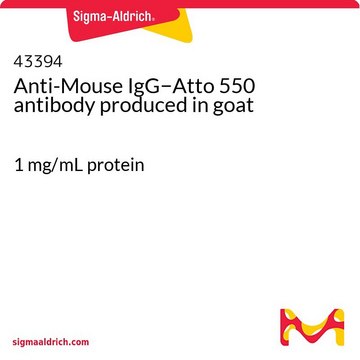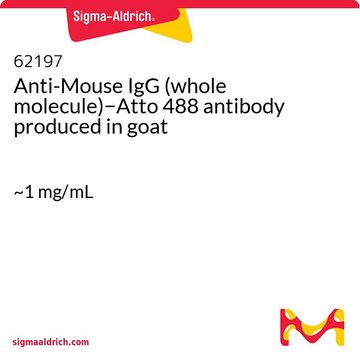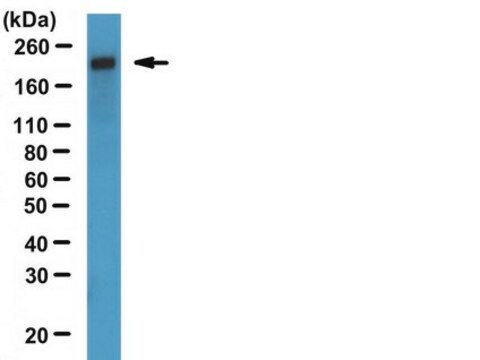43328
Anti-Rabbit-IgG - Atto 550 antibody produced in goat
Sinónimos:
Atto 550-Anti-Rabbit-IgG antibody produced in goat
About This Item
Productos recomendados
conjugado
Atto 550 conjugate
tipo de anticuerpo
secondary antibodies
clon
polyclonal
Formulario
liquid
contiene
50% glycerol as stabilizer
reactividad de especies
rabbit
concentración
1 mg/mL protein
técnicas
immunofluorescence: suitable
fluorescencia
λex 550 nm; λem 576 nm in PBS
Condiciones de envío
wet ice
temp. de almacenamiento
−20°C
modificación del objetivo postraduccional
unmodified
Descripción general
Inmunógeno
Aplicación
Atto 550-goat anti-rabbit-IgG has been used for immunofluorescence applications.
Forma física
Nota de análisis
Información legal
Cláusula de descargo de responsabilidad
¿No encuentra el producto adecuado?
Pruebe nuestro Herramienta de selección de productos.
Código de clase de almacenamiento
11 - Combustible Solids
Clase de riesgo para el agua (WGK)
WGK 1
Punto de inflamabilidad (°F)
Not applicable
Punto de inflamabilidad (°C)
Not applicable
Equipo de protección personal
Eyeshields, Faceshields, Gloves, type P3 (EN 143) respirator cartridges
Elija entre una de las versiones más recientes:
¿Ya tiene este producto?
Encuentre la documentación para los productos que ha comprado recientemente en la Biblioteca de documentos.
Artículos
Fluorescent Multiplex Detection using Antibody Atto Dye Conjugates
Nuestro equipo de científicos tiene experiencia en todas las áreas de investigación: Ciencias de la vida, Ciencia de los materiales, Síntesis química, Cromatografía, Analítica y muchas otras.
Póngase en contacto con el Servicio técnico




